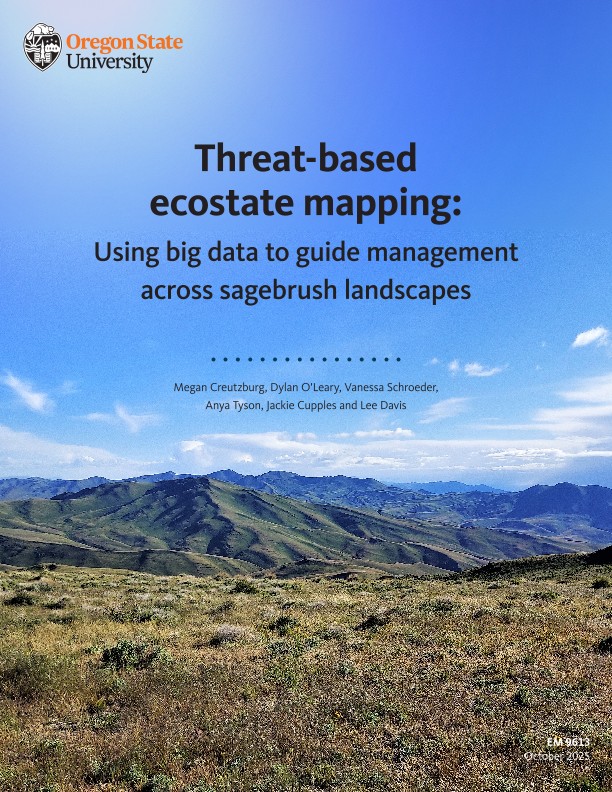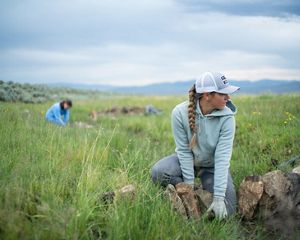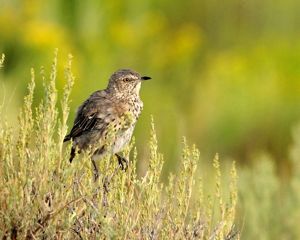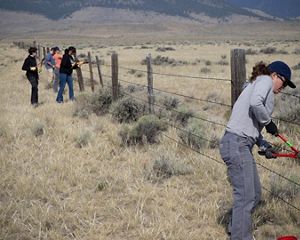Ecostate Mapping—New Tools for Conservation
Seeing the sagebrush sea clearly and acting with purpose

Across the West, the sagebrush sea stretches toward the horizon—home to ranching families, migrating wildlife, rural communities and deep cultural traditions. It’s one of the country’s great working landscapes, and one of its most threatened. Each year, invasive grasses, hotter and more frequent wildfires and expanding conifers chip away at the health of this ecosystem.
Caring for places this vast requires clear eyes and shared understanding. That’s why a team of scientists and land stewards has created a new guide to “ecostate maps”—a simple way to see where sagebrush is thriving, where it’s strained and where attention is most needed.
The paper offers a practical tool rooted in both science and real-world experience across the West. It was co-authored by The Nature Conservancy’s Megan Creutzburg, Anya Tyson and Lee Davis, along with Dylan O’Leary (Oregon Desert Land Trust), Vanessa Schroeder (Oregon State University) and Jackie Cupples (U.S. Fish and Wildlife Service).
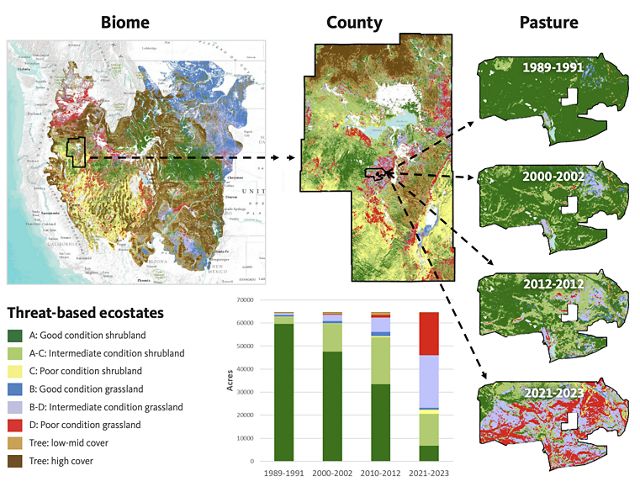
Seeing the Bigger Picture in a Changing Landscape
Think of ecostate maps as a landscape checkup. They pull together decades of satellite imagery and field data and translate it into an easy-to-read picture of land health. Instead of mapping every plant species, they group vegetation into broad categories—like perennial grasses, shrubs and invasive annuals—and show what’s gaining ground and what’s losing.
This approach doesn’t replace local knowledge. Instead, it helps partners start from the same map and ask the same questions, like:
- Where is the native sagebrush-bunchgrass community still strong?
- Where are invasive annual grasses creeping in?
- Where can a small action today prevent bigger problems tomorrow?
- Where do we need to “keep the good, good”?
At its heart, this tool is about supporting people who care for the land, not replacing their experience.
Built for Collaboration on Real Landscapes
Across the sagebrush sea, local partnerships are already using ecostate maps to guide conversations and coordinate work.
In southeast Oregon, for example, collaboratives of ranchers, conservationists and agency partners used the maps to agree on priorities: first protect the healthiest sagebrush areas, then tackle invasive grasses and early-stage conifer encroachment nearby. The result wasn’t just a plan on paper—it was a shared commitment, built on shared understanding.
That’s the strength of this approach. It sharpens focus, saves precious time and resources and helps neighbors and partners move in the same direction together.
Simple by Design, Stronger with People
The authors are clear: no map is perfect. Like a weather forecast, ecostate maps are most powerful when used alongside the experience of those who live and work on the land. They offer a starting point, a way to make big-picture decisions in places where every acre can’t be visited every year. And as satellite tools continue to improve, so will our ability to track change and respond thoughtfully.

What’s an “Ecostate”?
From science to stewardship: a simple way to see land health at scale.
Ecostates are a straightforward way to describe land condition across the sagebrush sea.
Instead of listing every plant species, ecostate maps group vegetation into four main types—perennial grasses, annual grasses, shrubs and trees—and show which are dominant.
Each combination represents a general “state” of the land:
- Healthy areas where native plants and sagebrush still thrive
- At-risk areas where invasive grasses or encroaching conifers are spreading
- Degraded areas where native cover has been lost and recovery will take more effort
Ecostate maps turn decades of satellite and field data into a clear, visual story of what’s happening across the range—helping people see patterns, talk about priorities and plan restoration work together.
Explore the Work
The full publication walks through:
- how ecostate maps are built
- how to use them effectively in planning, restoration and monitoring
- real examples from the field
- guidance on pairing maps with local knowledge
Whether you’re a land steward, scientist, rancher, agency partner or conservation volunteer, this resource is meant to support your work and spark productive conversations. Together, we can see this iconic landscape more clearly—and act with purpose to keep it thriving for generations to come.
Download

Keep Up to Date on Stories Like These
Sign up to receive monthly conservation news and updates from TNC.
